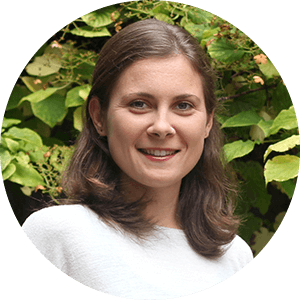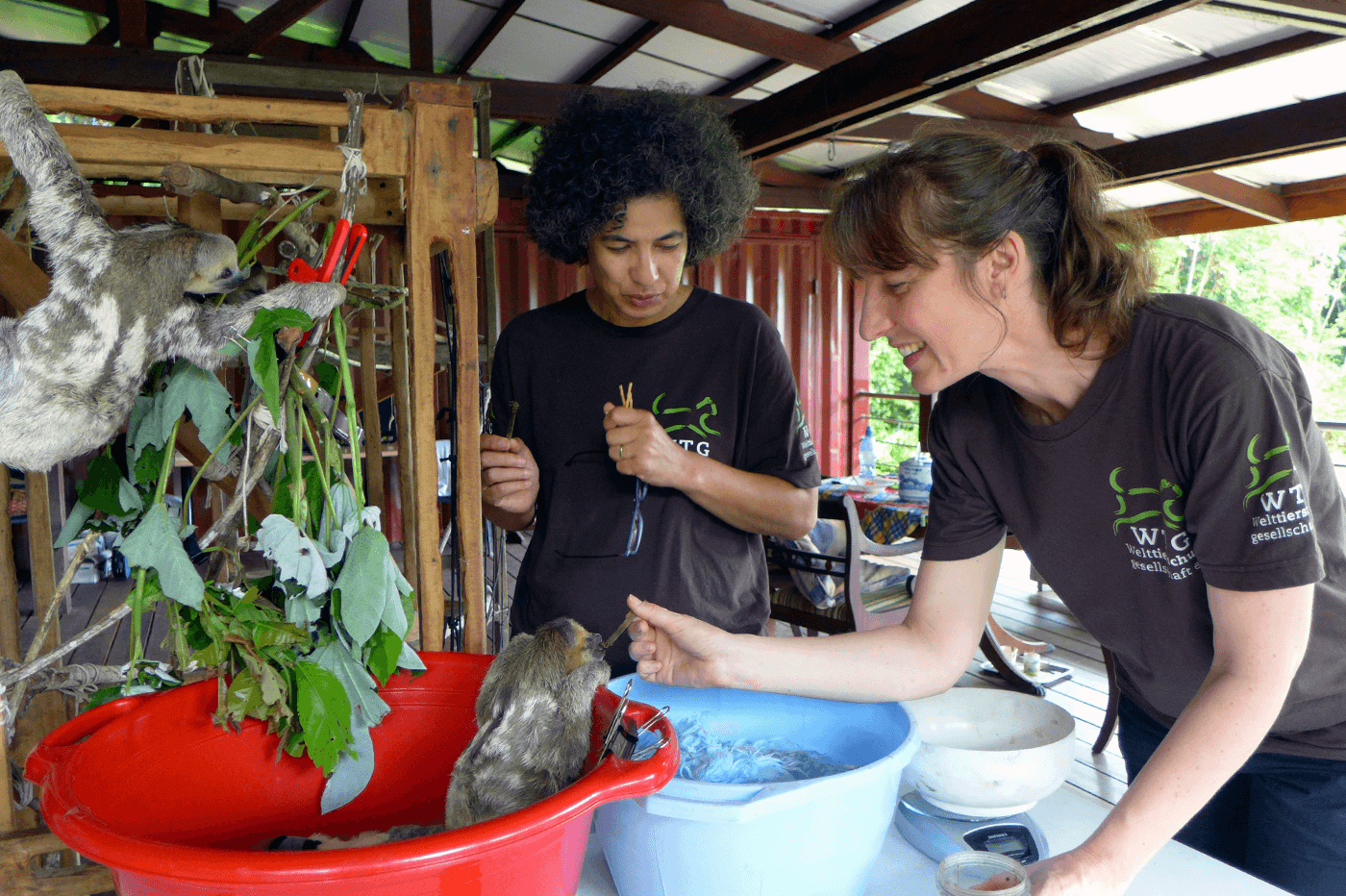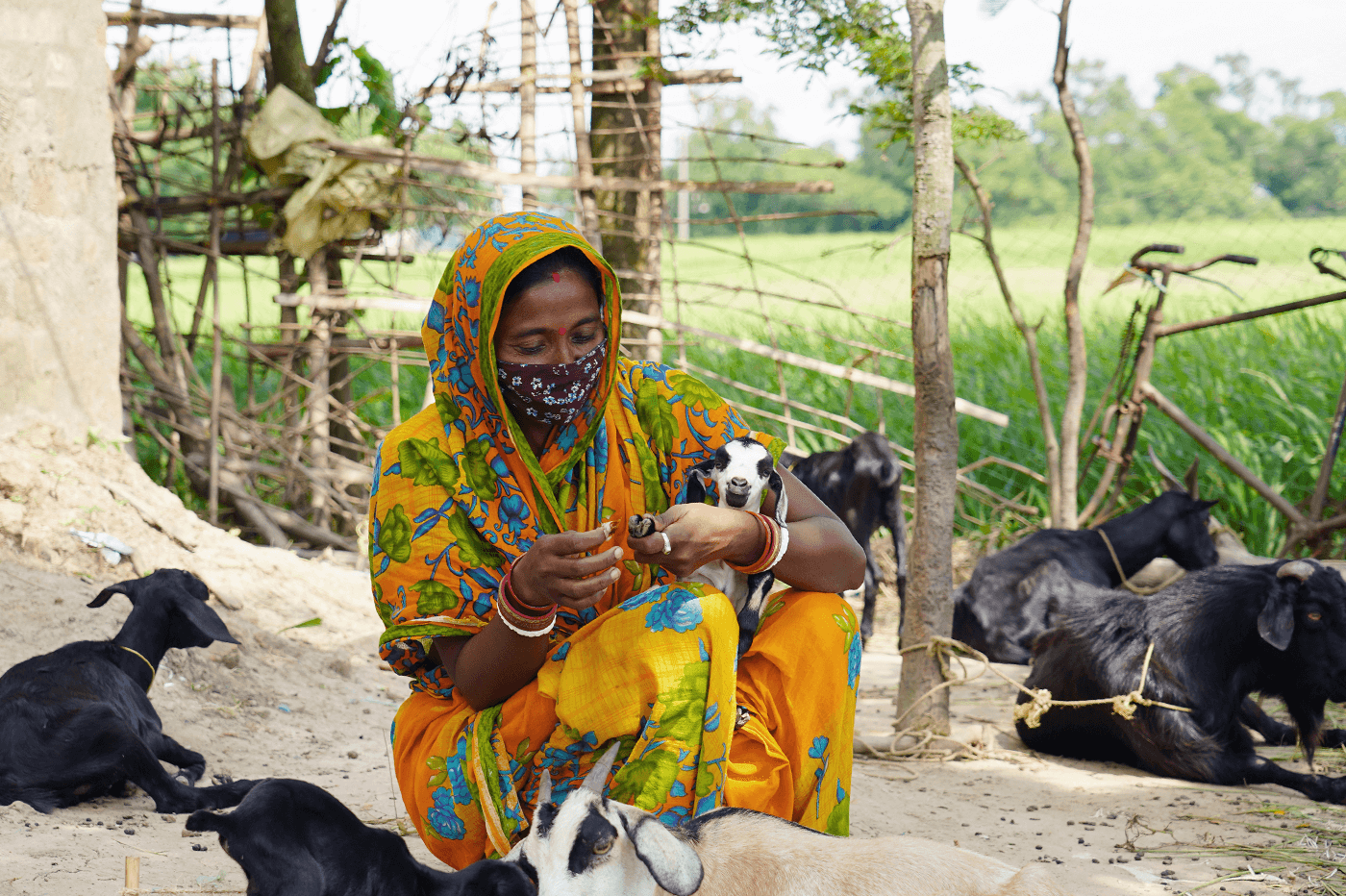About Welttierschutzgesellschaft
At Welttierschutzgesellschaft e.V. (WTG), the focus is on animal welfare projects in emerging and developing countries, as there are hardly any measures to protect animals there. Together with local partner organizations, projects for the sustainable improvement of the lives of stray, farm and wild animals are implemented with donations generated in the DACH region. As the Head of Operational Project Management, Stefanie Timm is responsible for ensuring that these projects run smoothly – and this is exactly where Stackfield comes into play.

Stefanie Timm – Head of Operational Project Management at WTG
The initial situation
Before Stackfield, communication in project work at Welttierschutzgesellschaft exclusively took place via email. Yet, over time, project management has changed, it has become more complex and thus also of higher quality. Many new steps, additional reporting formats, as well as new employees, required an alternative mapping of certain processes. In the course of this, Gantt charts were briefly tried out in project planning, yet they were not deemed to be practical. In any case, mere planning via email was no longer sustainable – project management had to become more transparent. The team quickly agreed that the implementation of a project management tool would be the solution.
"When everything is done via email, sometimes a colleague is not copied in. And then someone might go on vacation or suddenly become ill and the substitute may be missing important details. Therefore, we decided to find a tool that makes processes and communication transparent."

An insight into the work of Welttierschutzgesellschaft: A baby sloth is cared for in Suriname (© Welttierschutzgesellschaft e.V.)
Why Stackfield?
Besides the main topic of transparency, a basic requirement was that external partner organizations have access to the tool without having to invest the money themselves. And this is exactly what can be optimally solved by the external accesses on Stackfield. Since the project work primarily takes place on an international level, it was equally indispensable that the tool as well as the support be available in English. "We also use Stackfield internally in English. This allows us to react more quickly if something is unclear to the project partners and also to better understand where exactly the problem lies," says Timm.
According to Stefanie Timm, the very good storage options of the tool were also a big plus. This is particularly important when working with international partner organizations, since communication and collaboration are, among other things, supported by the regular uploading of photo and video material. "Now, our project partners can upload their photos, videos, and documents directly in Stackfield and we have everything in one place," says Timm.
Another very important aspect that ultimately led to the decision in favor of Stackfield was that the servers are located in Germany, as this was a key requirement for Welttierschutzgesellschaft from a GDPR perspective.
First steps with Stackfield
The first consideration when introducing the tool was: What is the best way to map the existing workflows? Finally, selected project partners were involved on a test basis and communication and collaboration began to run via Stackfield. After two months, all other project partners and, of course, all internal employees were gradually brought on board. Above all, it was particularly important to be able to work on each process individually. Therefore, in addition to the introduction by Stackfield, further internal training courses were held for the employees. Several group training sessions were also held with the project partners and questions were answered individually afterwards. Self-created step-by-step instructions with screenshots for individual work steps also helped to explain procedures and structures in a comprehensible way.
In 2021, the project management team even conducted a survey among all project partners of Welttierschutzgesellschaft in order to assess the general mood. In addition to the survey on the use of Stackfield and the satisfaction with the tool, there was also room for suggestions for improvement. Due to this, the team was ultimately able to better identify the needs of the project partners and to further optimize the use of Stackfield and create new use cases.

Goat offspring being treated in India (© Jasvinder Sehgal)
More structure and transparency with the Kanban board
The implementation of Stackfield was primarily intended to make project work and communication with external project partners clearer and, above all, more transparent. And this is exactly what Welttierschutzgesellschaft achieved: An estimated 90 percent of communication with partners takes place on Stackfield and processes are clearly mapped in the tool for everyone to see. "All relevant colleagues always have access and you can see at any time what is being worked on or if there might be a problem to solve," says Stefanie Timm.
The project work of Welttierschutzgesellschaft is arranged per partner and per contract period. For this purpose, a room is created in each case in which all communication and collaboration take place. The project partners are obliged to report to Welttierschutzgesellschaft, which means that they have to fulfill certain obligations and, for instance, submit reports on the progress of the project. The Kanban board in particular is of central importance here since this is where tasks and subtasks are created with a due date for the entire contract period, which the project partners can work through one by one.
Stefanie Timm also sees a great advantage in the fact that the Kanban board allows the individual steps to be mapped in such a detailed and easily understandable way.
"I have heard time and again from employees: 'It is great that everything is included in these small steps in the subtasks because I can't forget anything. I just follow the tasks and subtasks, work through them, and can be sure that I've considered all the individual steps.'"
The fact that the uploaded reports can also be annotated immediately via local editing has also improved collaboration enormously. "We look at the reports, see if there are any questions or whether there is something that needs to be added, put our comments in and upload a new version," explains Timm. If there are important issues or reports that need to be discussed, the discussions module is also very popular. According to Timm, the option of exporting discussions as a report is particularly helpful, because it allows users to see later that a topic has already been discussed and how it was resolved.
The individual rooms also work largely with roles and rights. For example, project partners are part of their own user group and can only see content that is relevant to them, such as tasks assigned to them. The project managers, on the other hand, also have their own tasks in the room, which are not visible to the project partners, and have access to all areas.
The mood among the employees of Welttierschutzgesellschaft as well as among the project partners is good – everyone enjoys working with Stackfield. And the tool has also proved helpful in training new employees. Now that Stefanie Timm has trained several new colleagues, she can report that everyone is satisfied.
"Stackfield creates a clarity that wasn't there before with emails. You have all the information about a contract at a glance. You walk in and find all the documents, all the reports, all the photos and videos, the entire communication. You are immediately up to date. For us, that's just great."
Plans for the future
In the future, the communications department also plans to increasingly map its work processes in Stackfield. Although the team is already partially involved in the individual project rooms, according to Timm, there are many other junctions with the project management team where collaboration on Stackfield makes sense.
The many updates of Stackfield should also be followed more closely in the future to be inspired and come up with new ideas on how to integrate them. With another survey conducted mid-year, Stefanie Timm also hopes for new insights and input in order to be able to adapt and optimize the work processes more and more.